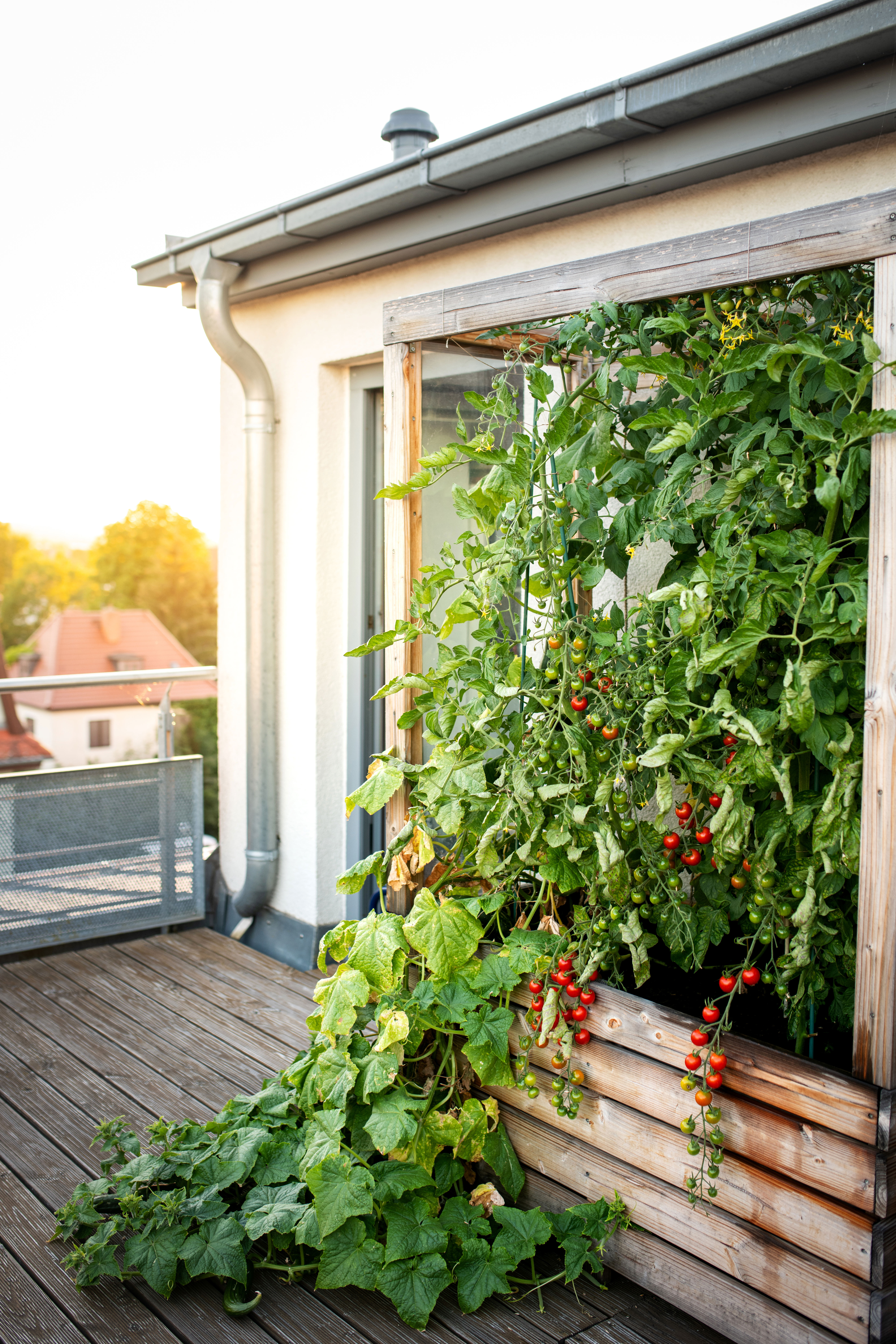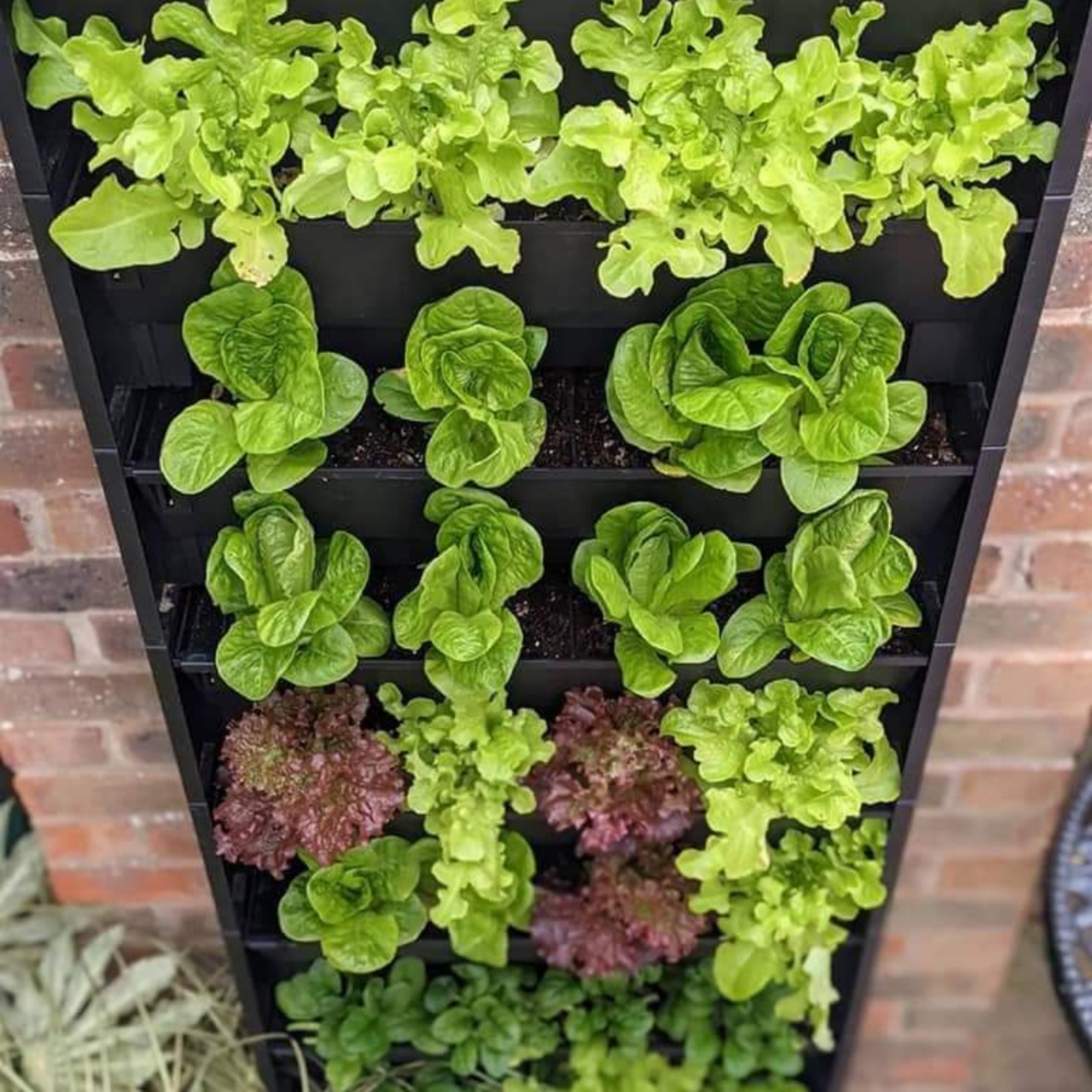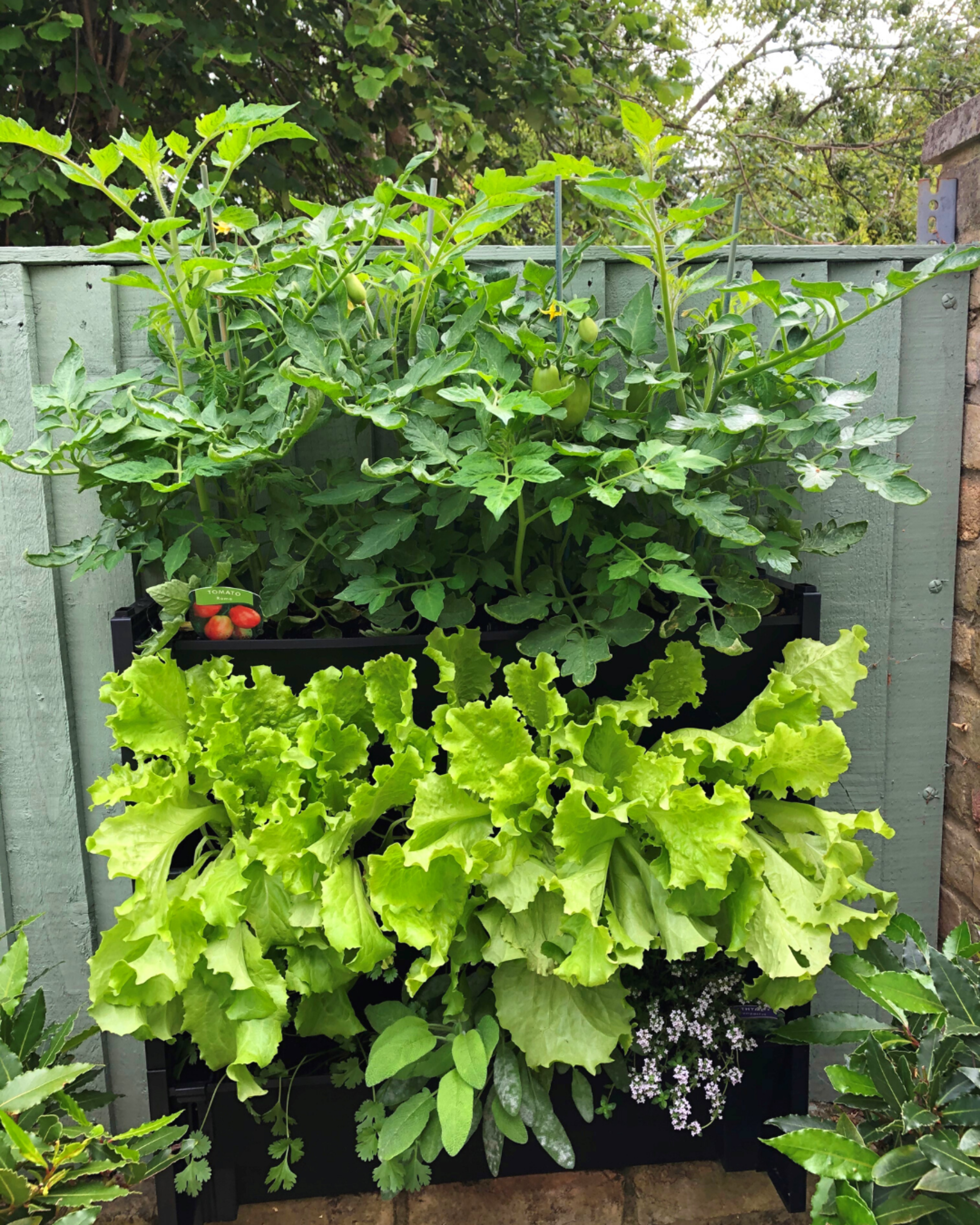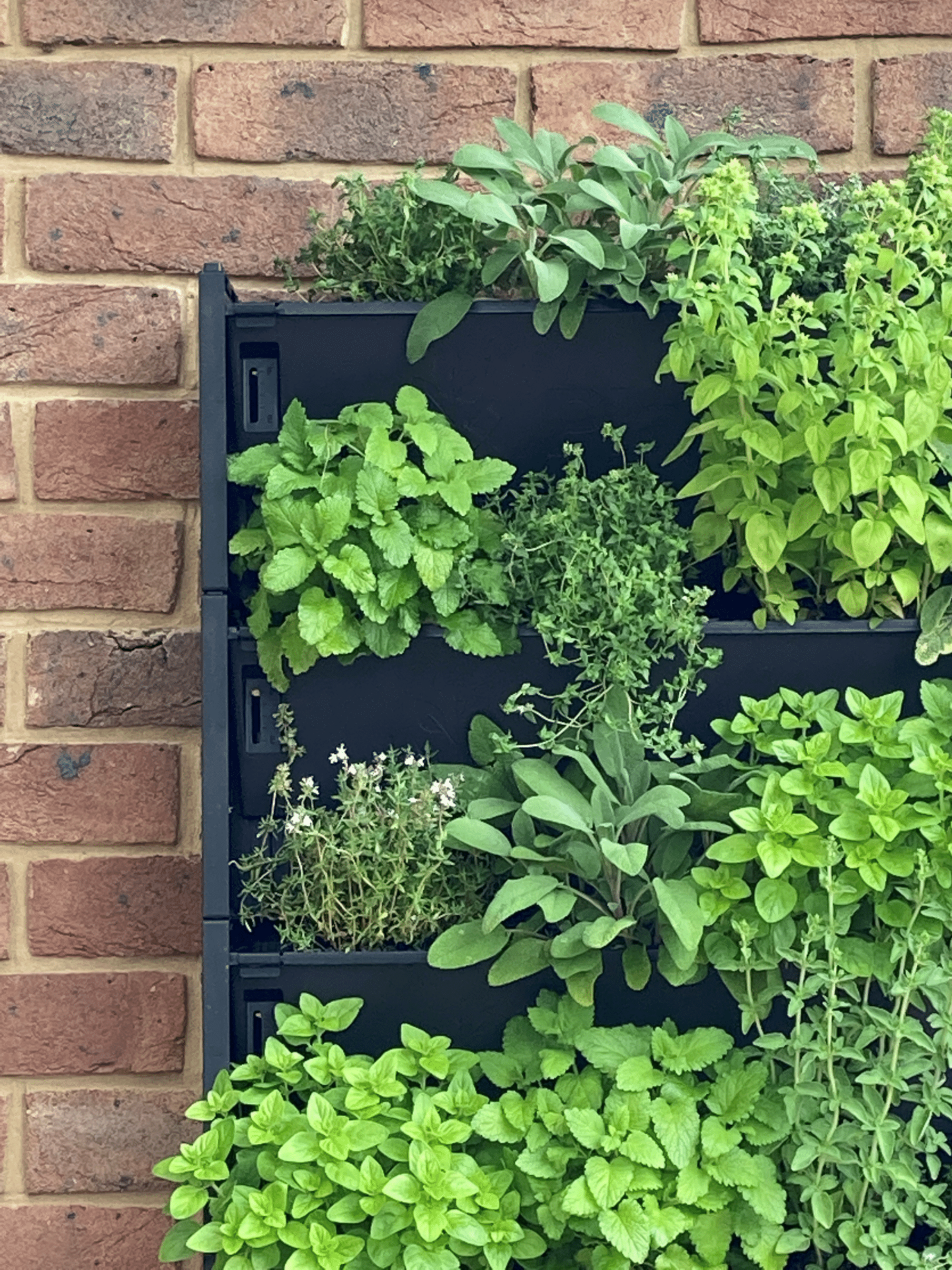'Vertical allotments' are the grow-your-own trend even small space gardeners can try
All it takes is a wall to grow your own crops, here's how


We all want to know how to make use of every inch of space in our homes, and our gardens are no exception. Spurred by the pandemic, vertical gardening has been the latest solution for those with small backyards or no outdoor space at all to enjoy the benefits of gardening using just a wall. But it's not only about planting the odd petunia or geranium - a vertical allotment allows you to take your gardening skills up a level by growing your own food produce without the need for a garden.
While a container garden is a simple way to enjoy the rewarding effects of nurturing your favorite plants using limited outdoor space, it still requires an area large enough for the pots. Not all of us (especially the city dwellers among us) are fortunate to even have a balcony or courtyard suitable, let alone an entire backyard. This is where outdoor allotments come into their own. With one of these set up in your small garden or on your balcony, all you need to grow vegetables is a vertical wall.
A vertical allotment involves growing produce vertically using existing walls or structures. 'Put simply, they're upright container structures providing a growing surface when space is short for herbs and vegetables,' says Isabelle Palmer, founder of The Balcony Gardener. This could be a trellis; planters fixed to a wall or fence; a pocket wall hanging; or a freestanding structure, such as a tiered grow tower.
These so-called 'living walls' overcome the need for lots of outdoor floor space for vast beds so that even the smallest of spaces can be used to grow herbs, fruit and vegetables.
'As attention continues to turn to where our food comes from, we’re not hugely surprised that people are now thinking about what more their living walls can offer them,' says Matt Lindsay, general manager at Growing Revolution.
He continues: 'With a fixture against an external wall or on a balcony, those in flats and other urban homes can reap the physical, mental and environmental rewards that gardening for production provides.'

Why are vertical allotments becoming more popular?
We all want to do our bit for the environment, and that satisfaction is even more rewarding when we get to enjoy our own food at the same time. But as urban populations continue to increase, people are looking at more innovative ways to grow their own veg through container gardening.
The Livingetc newsletters are your inside source for what’s shaping interiors now - and what’s next. Discover trend forecasts, smart style ideas, and curated shopping inspiration that brings design to life. Subscribe today and stay ahead of the curve.
'Garden space ordinarily is at a premium, especially in towns and cities,' explains Isabelle from The Balcony Gardener. 'Using space that is not really able to be utilized for anything else is a great way to make use of a garden, however small, as well as grow your own herbs and vegetables.'
There's also a huge demand for community garden (sometimes called allotment) space, leading people to find their own smaller-scale solutions. As Isabelle explains: 'Allotments have waiting lists that span 20 years. Due to the rising interest in growing-your-own - and now rising food costs - it's more important than ever to get a space to grow some of our food sources.'

How can I make a vertical allotment?
There's no right or wrong way to make a vertical allotment - in general, it will just depend on the space you have available. However, vertical gardens of any kind will generally make use of an existing vertical structure - like a wall - or a dedicated free standing structure, like a vertical planter or grow tower.
Whether you choose to invest in a vertical planter or use an existing structure will again depend on how much space you have. If you have an outdoor area large enough for a planter, such as a balcony or porch, then a planter might be your best option. For some of us, our space might be limited to a pathway lined by a wall or fence in which case a wall hanger may be better suited. These typically have fabric pockets you can fill with soil and grow different plants in.
'Use ready available living wall structure products,' says Isabelle. 'These will need to be attached to a wall but they're great as they already have ready made irrigation in place.'
You can also use more inexpensive materials inside pots for climbing plants. 'Make bean teepees using bamboo canes, hazel poles or any other long, straight tree prunings from a garden. Push six to eight canes into the pot and tie with twine around the top,' says Isabelle.
There's also the option of screwing a wooden planter into a wall. You could use a dedicated troughed wall planter like the one from Growing Revolution, or, for a more rustic vibe, you could repurpose an old pallet and use the slats to hold your pots. Follow our tips on vegetable container gardening to help you choose the right container for your vegetables.
How much space do I need for a vertical allotment?
The amount of space you need to create a vertical allotment will depend on what you hope to grow but the short answer is, not much! 'If you have space for a pot, you have space for a vertical allotment,' says Isabelle.
A vertical allotment doesn't necessarily need any floorspace if you're mounting the planter to a wall or fence however, these will inevitably jut out from the structure they're fixed to so be sure you have enough width available. This is especially important if you're planning on fixing a planter to a shared walkway.
When it comes to how much wall space you use, the decision is your hands! You could just add a single trough to your wall or cover the entire surface with pocket hangers for a vertical garden living wall effect.
If you opt for a grow tower instead you will need some floor space, but not a lot - these planters can be as little as 12 inches in circumference! This means there will likely be space for a grow tower by the side of your doorstep or even on an external stairway.
The same goes for pots which can home multiple plants, however small. 'Their bases can also be under-planted with trailing plants as well as climbers to utilise space,' says Isabelle.

What vegetables can you grow in a vertical allotment?
When it comes to which vegetables to incorporate into your small vegetable garden, shallow root crops such as radishes and baby carrots work well as they take up minimal space and don't require large amounts of water. They'll also tolerate a fair amount of shade, which will be likely if your vertical allotment is fixed to a wall.
Herbs are also a great way to build a beautiful green and fragrant vertical allotment which makes an especially great addition outside of a kitchen window and can be planted between other produce, too. Salad leaves and other leafy greens such as chard also create a green wall effect.
According to Isabelle, climbing vegetables are a good choice since they grow vertically, therefore making the most of your space. Pole beans, climbing peas, sweet potatoes, vining tomatoes, and sprawling types of courgette, cucumber and squash would all work well in a vertical planter or pot. Avoid vegetables varieties that are going to completely take over the space however, else you won't have space for any other produce.
Where should a vertical allotment be placed?
As with any type of gardening, you'll still need to consider the basics when it comes to growing a vertical allotment. Plenty of natural light, suitable potting compost and well draining soil are all vital for your plants to thrive. For this reason, it's best not to add a vertical allotment to an area that's mostly in shade

Lilith Hudson is a freelance writer and regular contributor to Livingetc. She holds an MA in Magazine Journalism from City, University of London, and has written for various titles including Homes & Gardens, House Beautiful, Advnture, the Saturday Times Magazine, Evening Standard, DJ Mag, Metro, and The Simple Things Magazine.
Prior to going freelance, Lilith was the News and Trends Editor at Livingetc. It was a role that helped her develop a keen eye for spotting all the latest micro-trends, interior hacks, and viral decor must-haves you need in your home. With a constant ear to the ground on the design scene, she's ahead of the curve when it comes to the latest color that's sweeping interiors or the hot new style to decorate our homes.